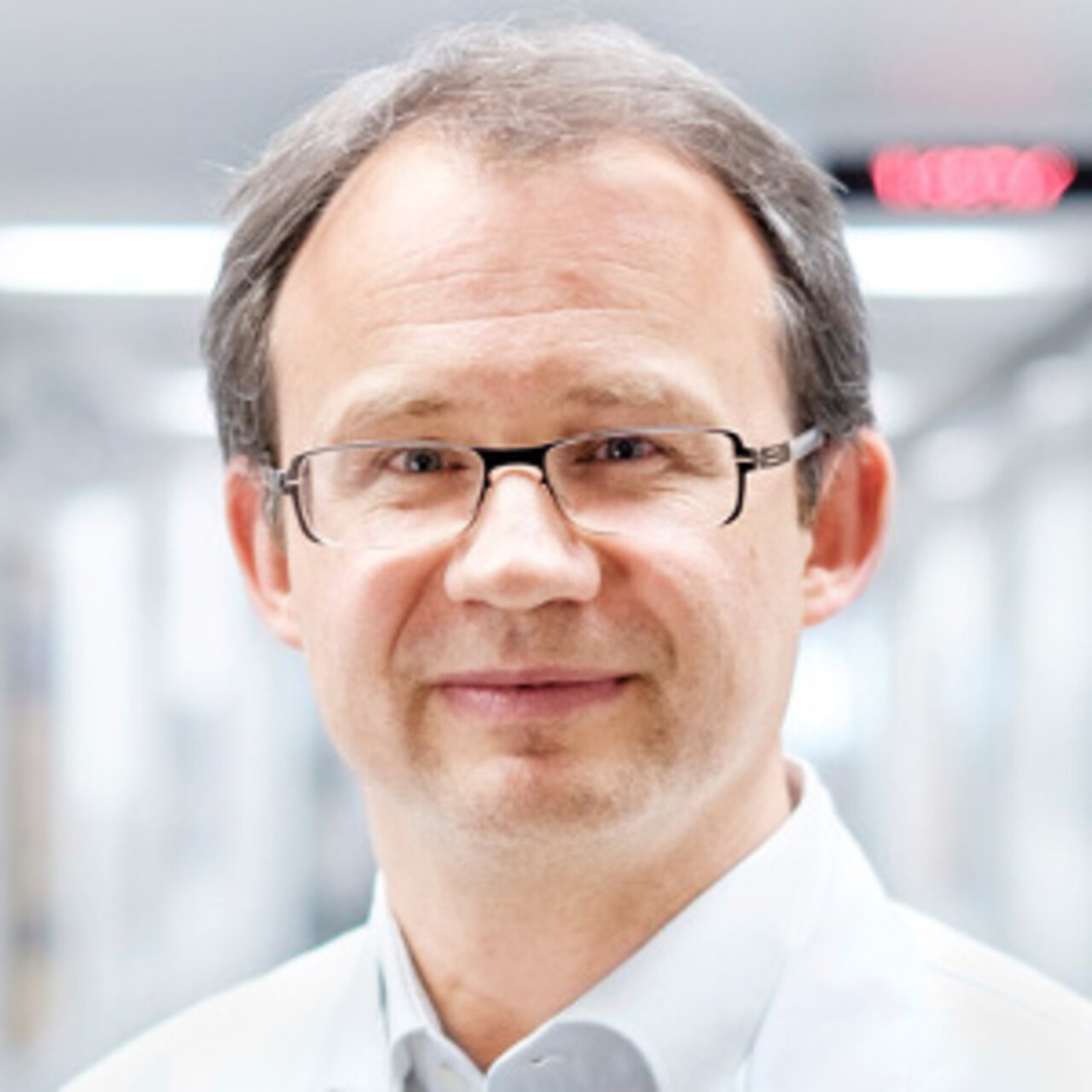Specialists in Cancer Therapy
7 Specialists found
Information About the Field of Cancer Therapy
When Is Cancer Therapy Carried Out?
The goal of cancer therapy is to cure existing cancer. The early detection of cancer is important for this. Various early detection examinations are designed to support this (for example, breast cancer screening, colorectal cancer screening, and prostate cancer screening). The earlier cancer is diagnosed, the greater the chances of cure.
In addition to tumor characteristics, the cancer patient's age and health status are significant, which can be decisive for the choice of a particular type of therapy.
In some instances, a wait-and-see check-up of tumor parameters may be possible. Because the therapy's side effects are significant and the tumor growth is low, it means that cancer therapy is only applied when symptoms appear (e.g., prostate cancer at an older age).
If the tumor is discovered too late and no cure is possible, cancer therapy tries to alleviate symptoms and pain and improve life quality.
Which Methods of Cancer Therapy Are Available?
Each tumor responds differently to different types of cancer therapy. Therefore, there are specific treatment regimens for each type of cancer. These include radiation therapy, chemotherapy, tumor surgery, antibody therapies, and other drug treatments, or a combination of different procedures.
Cancer Surgery
Cancer surgery involves removing the tumor from healthy tissue. This procedure is suitable for solid tumors located in only one focus in the body so that the person is cured after the surgery. To check whether all cancer cells were caught and removed from the body during the surgery, a safety margin of healthy tissue is cut out around the tumor. Then the tumor is sent to the pathologist, who evaluates under the microscope whether there is enough safety margin to the diseased tissue at all edges.
Meticulous care is taken not to touch or even incise the cancerous tissue during the surgery. Otherwise, the surgical instruments could become contaminated with tumor cells. A new tumor focus could be planted the next time it comes into contact with another part of the body.
In the case of tumors that, according to current medical knowledge, spread via the lymphatic channels, a sentinel lymph node biopsy is performed, which means that the first lymph node in the tumor's lymphatics is examined to see if it is affected. If it is not affected, it can be assumed that the tumor has not spread. If it is affected, further diagnostics must be carried out to learn the extent of tumor spread.
The most common surgically removed tumors are malignant melanoma (black skin cancer), breast cancer, and prostate cancer. All three forms of cancer are often solid tumors and have not spread when discovered, so they meet cancer surgery criteria.
Chemotherapy
Chemotherapy is a method in which a drug is injected into the patient's bloodstream. These chemotherapeutic agents damage the genetic material of cells and kill them, which is used in cancer therapy because malignant cancer cells divide very quickly, compared to normal tissue such as muscle cells or bone cells. For this reason, cancer cells often have to duplicate their genetic material and are thus the target of chemotherapeutic agents.
Chemotherapy is suitable for treating cancers with many foci distributed throughout the body, as the whole body is reached via the bloodstream. Since chemotherapeutic agents damage all cells that divide rapidly, healthy tissues with this property are also damaged. These include, among others, hair, nails, intestinal mucosa, skin, which explains the side effects of chemotherapy, namely hair loss, nausea, diarrhea, and dry and scaly skin.
Chemotherapy is mainly used for hemato-oncological diseases, i.e., a blood cancer. Since blood cells in the bone marrow or lymph nodes degenerate and then divide rapidly, the diseased cells can be killed well with chemotherapeutic agents.
Radiotherapy
Radiation therapy uses high-energy radiation that is explicitly directed at tumor tissue. Radiation causes changes in the genetic material, and if the dose (energy per mass) is high enough, the damage is severe to the extent that the affected cells die. The radiation can be directed at the tumor tissue either from the outside (percutaneous radiation) or from the inside by inserting radiation sources in the tumor's immediate nearness. Radiation therapy proceeds in several sessions since only cells in a specific cell cycle can be killed.
To catch all tumor cells, patients usually need to be irradiated 5 days per week for 4-8 weeks. Radiation therapy is suitable for tumors located inside the body and difficult to access for surgery. In addition, radiation therapy is used as adjuvant therapy, which means that after surgery or chemotherapy has been carried out, radiation therapy is given to destroy any possible remaining tumor cells finally.
Special radiotherapeutic procedures in which the radiation is more precise than conventional devices are brachytherapy, proton therapy, and stereotactic radiosurgery. Radiosurgery can replace surgery in some cases and is often compared to a scalpel.
Stem Cell Transplantation
This form of stem cell transplantation is used primarily in the treatment of various forms of blood cancer. The medically exact name for this is "hematopoietic stem cell transplantation." It is not cancer therapy in a direct sense. The stem cells are inserted after chemotherapy to replace the destroyed diseased hematopoietic tissue. Besides, the "donor versus recipient" effect is used here. The donor stem cells are in the majority and healthy and can thus "displace" the possible remaining diseased stem cells and ultimately defeat the blood cancer.
Hyperthermia Therapy
Treatment with hyperthermia is based on targeted heating of the body or individual body parts, making cancer cells more sensitive to the immune system, accompanying radiation treatment, or chemotherapy. Therefore, the various hyperthermia procedures aim to affect other cancer therapies better and not kill the cancer cells directly through the heat.
Palliative Care
Even if a cancer disease is no longer curable, much can be done for the patient's life quality through palliative care. The ultimate goal of palliative treatment is to relieve pain and treat distressing symptoms. These include, for example, surgical removal of the tumor to reduce the size of the tumor tissue and thus ease the burden on neighboring tissue. Besides, radiation therapy for metastases in the lungs or bones can lead to improved life quality.
Personalized Cancer Therapy: For Whom Is it an Option?
Personalized cancer therapy requires therapy selection based on tumor characteristics such as type and stage, but consideration of the patient. Factors such as age, weight, kidney and liver function, and the tumor's biomarkers are to be considered in therapy planning. Not every tumor of one type is the same. Individual cancer therapy requires collaboration from many medical fields, such as pathology, surgery, radiation therapy, and oncology. Physicians from all significant fields meet in so-called tumor boards to discuss each patient individually and plan further procedures together.
Targeted Cancer Therapy
Targeted cancer therapy is treatments with drugs that specifically intervene in processes that are important for tumor growth. Since they target specific properties of the individual tumor cells, only cancer patients whose tumors have these properties can be treated with targeted drugs, which is why a precise determination of the tumor's cell properties is carried out in advance. If the tumor does not match the drugs, targeted cancer therapy is out of the question. There are now many different of these modern cancer drugs. Especially in lung cancer, black skin cancer, CML, and GIST, so-called targeted therapies can be used.
Immuno-Oncology
Immuno-oncology is also not a direct cancer therapy but focuses on strengthening the body's defenses. This is intended to increase the effect of chemotherapy and radiation and can open up a new perspective in fighting various cancer types. Through different strategies, cancer cells can present themselves as harmless to the immune system or even suppress the immune system, which allows the tumor to grow rapidly in the body and spread to other regions. Immuno-oncology therapies can activate the body’s natural killer cells directed against cancer cells and T-cells so that they specifically attack the cancer cells.
Antibody Therapy
Antibodies are an essential part of the immune defense. They specifically recognize specific characteristics of pathogens, cells, and foreign substances. This property leads to great hopes for antibody therapy in the treatment of cancer in modern medicine because antibodies also recognize typical features on tumor cells so that they can attack them specifically and cause only a few side effects. Many so-called monoclonal antibodies have already been approved as drugs and can now cure cancers that were considered hopeless just a few years ago.
Tumor Vaccination
Tumor vaccination is a method of immuno-oncology and intended to activate the immune system so that tumor cells are specifically attacked. For this purpose, similar to a vaccination, structures of the tumor cell are used and placed into the body, which causes an activation of the immune cells against exactly these tumor cell structures so that a targeted immune response is induced.
Alternative Cancer Therapy: What Should Be Paid Attention to?
"Alternative medicine" is said to offer real opposition to conventional medicine. Many of its supporters are even convinced that methods of traditional medicine are harmful. It should be explicitly noted that alternative medicine is not subject to the rules of scientifically based medicine, nor is it subject to strict quality control, as is traditional medicine. In many cases, there are no good therapy options (anymore) for cancer patients, e.g., because the tumor stage is already too advanced. The disappointment and hopelessness lead those patients to alternative medicine, which advertises with great promises that are not empirically proven.
Risks and Side Effects of Tumor Treatment
The general side effect of tumor treatment is the destruction of healthy cells. In chemotherapy, these are the rapidly dividing cells such as skin, nails, intestinal mucosa. In radiation therapy, cells in the radiation field are often damaged, such as the skin above the tumor or adjacent tissue. During surgery, the general side effects of surgery, such as wound healing problems and the usual side effects of anesthesia, such as nausea, occur.
Which Doctors and Clinics Are Specialized in Treating Cancer?
In clinics, all specialists meet in so-called tumor boards to discuss the therapy and further procedure of mutual patients to find the best individual solution. The specialists of the respective organ affected are primarily in charge of cancer; then, the therapy is carried out by a specialist in radiotherapy or surgery. Pathologists, radiologists, and nuclear medicine specialists are involved in diagnosing and assessing the tumor's extent.
Specialists and Tumor Centers
- Gynecology: breast cancer, cervical cancer, ovarian cancer
- Urology: prostate cancer
- Dermatology: skin cancer
- Pneumology: lung cancer
- Hematology: blood cancer
- Orthopedics: bone cancer, muscle cancer
- Ear, nose, and throat: salivary gland cancer, vocal cord cancer, pharyngeal cancer, oral cancer, tongue cancer
- Neurology and neurosurgery: brain cancer
Sources:
- Herold et al.: Innere Medizin. Eigenverlag 2012, ISBN 978-3-981-46602-7.
- Schlegel: Neuroonkologie. Thieme 2003, ISBN 978-3-131-09062-1.
- Wannemacher et al. (Hrsg.): Strahlentherapie. 2. Auflage. Springer 2013, ISBN 3-540-88304-5.
- Hien: Praktische Pneumologie. 2. Auflage. Springer 2011, ISBN 978-3-642-10209-7.
- Hiddemann et al.: Die Onkologie: Teil 1: Epidemiologie - Pathogenese - Grundprinzipien der Therapie. Springer 2013, ISBN 978-3-662-06671-3.
- Karow, Lang-Roth: Allgemeine und Spezielle Pharmakologie und Toxikologie 2012.
- Hof, Dörries: Duale Reihe Medizinische Mikrobiologie. 3. Auflage. Thieme 2004, ISBN 3-131-25313-4.
- Lüllmann-Rauch: Histologie. 2. Auflage. Thieme 2006, ISBN 3-131-29242-3.
- Königshoff, Brandenburger: Kurzlehrbuch Biochemie. 3. Auflage. Thieme 2012, ISBN 978-3-131-36413-5.
- Alberts et al.: Molecular Biology of the Cell. 6. Auflage. Taylor & Francis 2014, ISBN 0-815-34464-3.
- Pezzutto et al.: Taschenatlas der Immunologie. 2. Auflage. Thieme 2006, ISBN 978-3-131-15382-1.
- Ekkens et al.: Th1 and Th2 Cells Help CD8 T-Cell Responses. In: Infection and Immunity. Band 75, Nummer 5, 2007, doi: 10.1128/iai.01328-06, S. 2291–2296.
- Abbas et al.: Functional diversity of helper T lymphocytes. In: Nature. Band 383, Nummer 6603, 1996, doi: 10.1038/383787a0, S. 787–793.
- https://www.krebsinformationsdienst.de/behandlung/gezielte-krebstherapie.php






